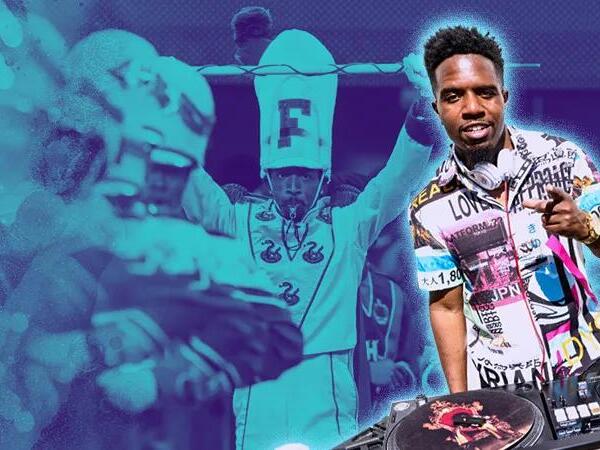Physical Address
304 North Cardinal St.
Dorchester Center, MA 02124
Physical Address
304 North Cardinal St.
Dorchester Center, MA 02124

Nobody has a better front-row perspective to the growth and development of pop music — and how it affects pop culture — than DJs. As the party controllers, they are the ones who set the vibes, but they also get to see trends as they play out in real time. Sometimes, they’re even the ones sparking those trends.
Much of American culture has come from the Black experience: jazz, rock & roll, hip-hop, and dance music all started in music halls and underground venues catering to a Black American clientele that was often barred from more mainstream spaces.
One of the spaces that Black folks were kept out of was higher education. As we found juke joints and empty rec rooms to develop jazz and launch hip-hop, Historically Black Colleges and Universities became cultural hot spots, where new movements in politics and art were nurtured to change the course of American history.
In looking to gain new insights on how HBCUs have impacted America’s various party scenes, there was no better resource to turn to than LA native DJ R-Tistic. A veteran of the DJ scene, from local weekly residencies to corporate gigs to Coachella, R-Tistic has seen every kind of party imaginable. As a graduate of Florida Agricultural and Mechanical University (FAMU), he has experienced firsthand how Black student life can impact social and cultural standards, even miles away.
Reflecting on his time at FAMU, R-Tistic shared, “I didn’t start DJing until I got there. Initially, I didn’t even plan to be a DJ. But FAMU influenced me in many ways because everyone came from somewhere different.” In the mid-2000s, regional music was distinctive. R-Tistic highlighted, “St. Louis had Chingy, J-Kwon, and Nelly, while LA had Snoop and Game. Even The Bay sounded different from LA back then.”
His first experience with a New Orleans party was eye-opening. He recalled, “They were like, ‘You from LA, you don’t know our real music.’ That experience at a HBCU exposed me to many different music styles.” He fondly remembered hearing songs at FAMU that were foreign to his LA ears, but eventually made sense with exposure.
The influence of the blogosphere did change the music landscape, making it more homogeneous. But R-Tistic noted, “Even now, you’ll hear more regional music at FAMU. The blog area, social media, and streaming homogenized things to an extent, but there’s still a variety.”
Reflecting on artists from different regions, he mentioned, “Some artists didn’t match the sound of where they were from. Even Kendrick Lamar’s ‘Swimming Pools’ didn’t have a traditional West Coast sound.” These artists created music based on broader influences, not just regional sounds.
HBCUs like FAMU helped diverse music styles flourish, allowing students to share their regional sounds. R-Tistic recalled events like “Rep Your City,” where students celebrated their unique music and dance. He emphasized, “Everybody had their own little moments. And some people got booed because their music was unfamiliar.”
Over time, students from different cities became friends, leading to a blending of musical tastes. R-Tistic remarked, “Freshman year, everyone gravitates toward their city’s identity. But after a couple of years, you start meeting friends from different places, flattening regional differences.”
The HBCU experience also accelerated music trends. He recalled, “I remember bringing K-Wang back to LA in ’02, but it didn’t hit LA until ’08.” These institutions helped new music reach different parts of the country faster.
Many prominent DJs, including Young Guru, Drama, Cannon, and Jae Murphy, are HBCU alumni. R-Tistic acknowledged, “HBCUs have produced many of the major DJs around the country.”
Discussing the relevance of HBCUs today, R-Tistic argued that they remain vital. He said, “Anyone questioning why HBCUs exist is already turned off. The real world isn’t all Black, but nobody tells white students not to attend predominantly white institutions.” He added that the support and cultural experiences at HBCUs are invaluable.
Sharing a personal example, R-Tistic recounted how a professor once called him at 1:00 AM to remind him about pending assignments. “That type of experience wouldn’t happen at a predominantly white institution. It was a Black teacher who felt like I was his nephew,” he explained.
In conclusion, R-Tistic affirmed that HBCUs offer a supportive environment that helps students succeed. “Get on that platform,” he advised. For him and many others, these institutions are not just places of learning but also cultural centers crucial for Black communities.
Source: Getty Images, Merle Cooper.



